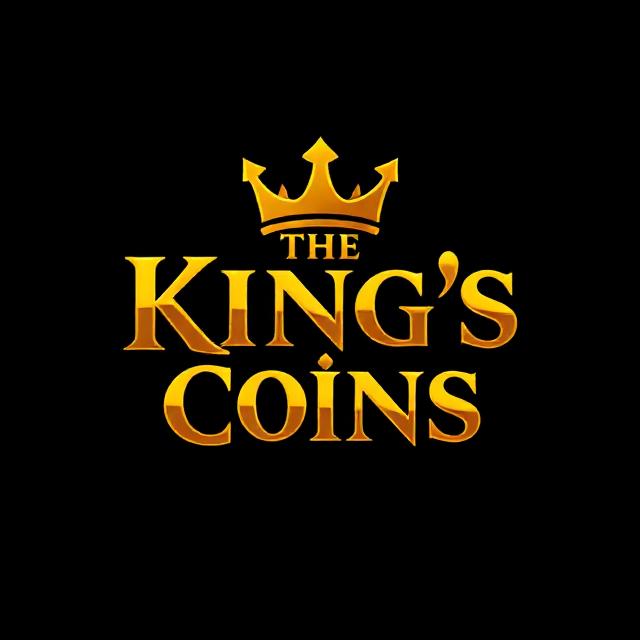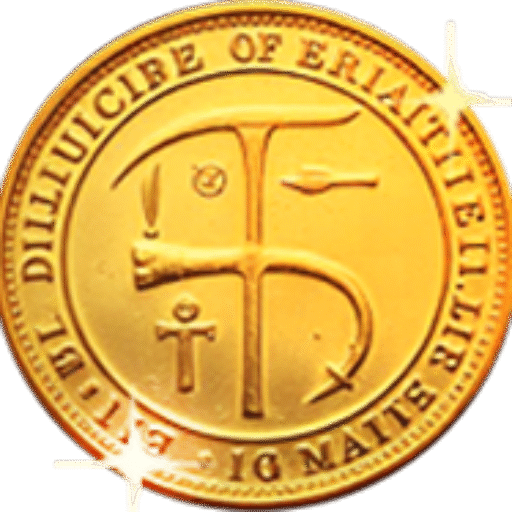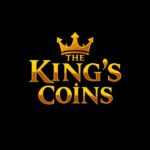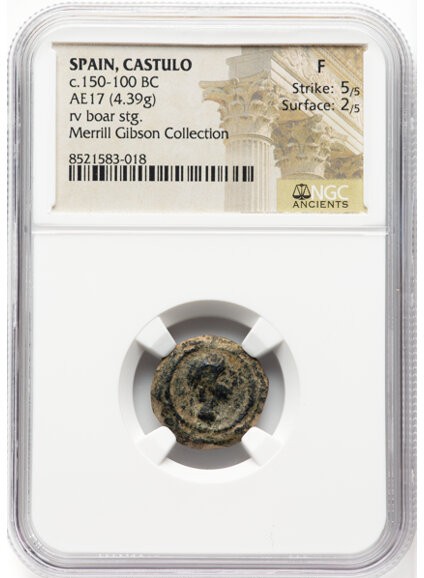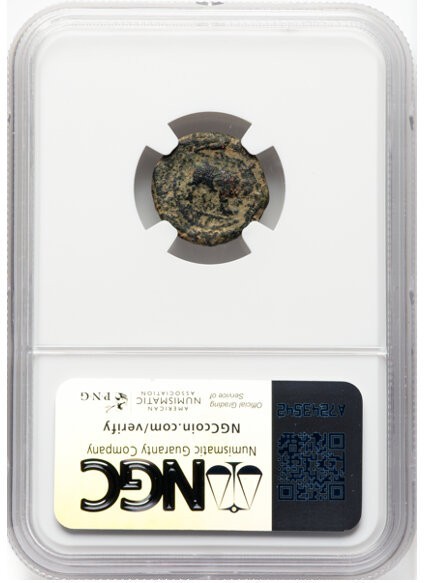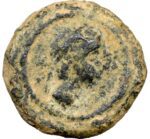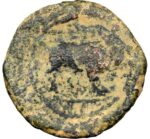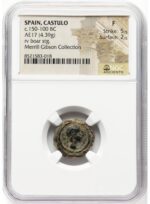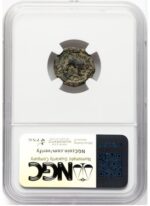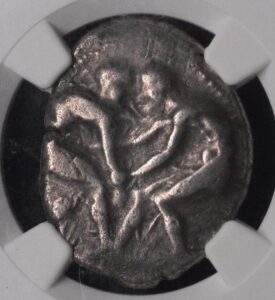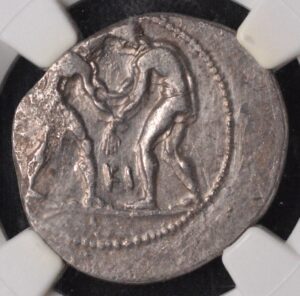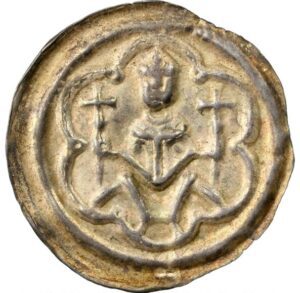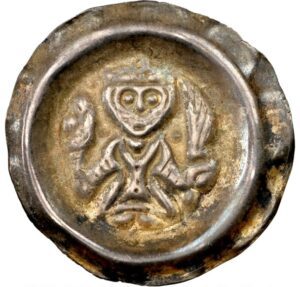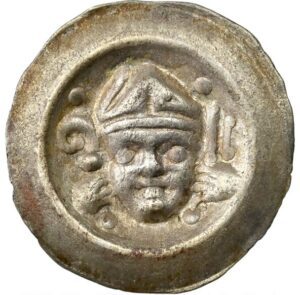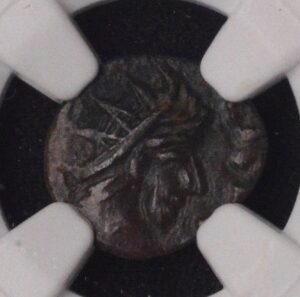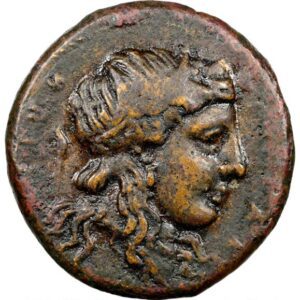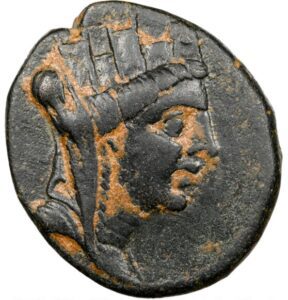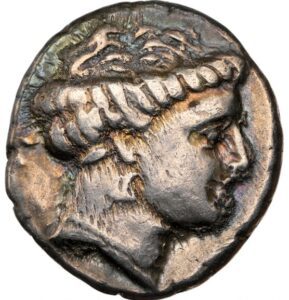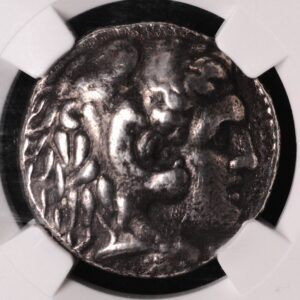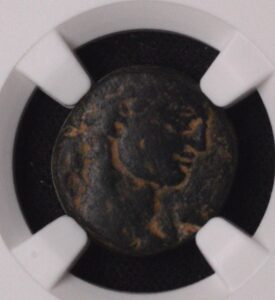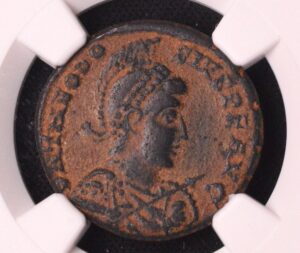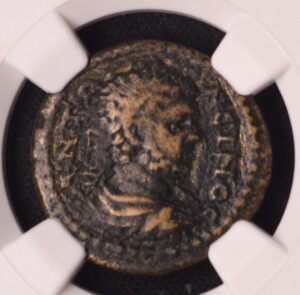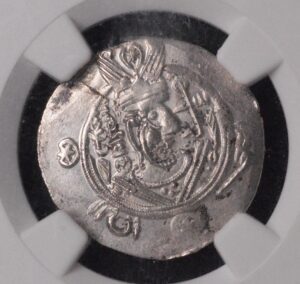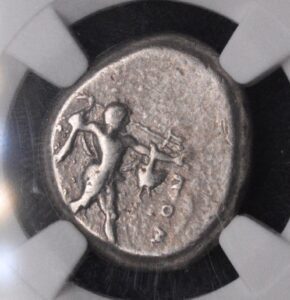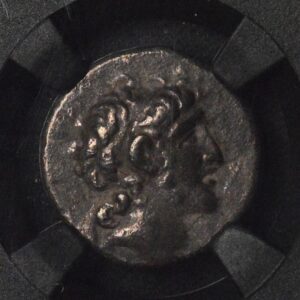Description
The Spanish Castulo AE coin from around 150–100 BC is a bronze issue from the ancient Iberian city of Castulo (modern-day Linares, in the province of Jaén, southern Spain). This city was an important center in the region of Baetica and played a strategic role in trade and warfare during the Iberian and later Roman periods.
The typical obverse of these Castulo bronzes features a diademed male head facing right, often interpreted as a local deity or ruler. The reverse commonly shows a bull advancing right with a crescent above, although other reverse types—such as sphinxes or animals—are known from different emission phases. The legend sometimes includes the Iberian script spelling the city’s name, Kastilo.
The specific coin referenced, weighing 4.39 grams and measuring 17 mm, is certified NGC Fine 5/5 (strike) – 2/5 (surface), indicating a strong strike with moderate surface roughness or patina typical for ancient bronze. It was recently featured in Heritage Auctions’ September 2025 sale within the Merrill A. Gibson Collection of Ancient Coins, confirming its authenticity and collectible pedigree.
In the ancient coin market, small Castulo bronzes like this in Fine condition typically sell from $50 to $100, depending on completeness of details, patina, and certification. Larger specimens or better-preserved examples can exceed this range. The combination of Iberian artistry and early Roman influence adds further historical appeal.
In summary, the Spain, Castulo AE (17 mm, 4.39 g, circa 150–100 BC) is a historically rich bronze coin from Baetica featuring a diademed male portrait and a typological reverse rooted in Iberian symbolism. Its NGC Fine 5/5–2/5 example represents a collectible and affordable artifact from an important crossroads of ancient Mediterranean civilization.
The Spanish Castulo AE coin from around 150–100 BC is a bronze issue from the ancient Iberian city of Castulo (modern-day Linares, in the province of Jaén, southern Spain). This city was an important center in the region of Baetica and played a strategic role in trade and warfare during the Iberian and later Roman periods.
The typical obverse of these Castulo bronzes features a diademed male head facing right, often interpreted as a local deity or ruler. The reverse commonly shows a bull advancing right with a crescent above, although other reverse types—such as sphinxes or animals—are known from different emission phases. The legend sometimes includes the Iberian script spelling the city’s name, Kastilo.
The specific coin referenced, weighing 4.39 grams and measuring 17 mm, is certified NGC Fine 5/5 (strike) – 2/5 (surface), indicating a strong strike with moderate surface roughness or patina typical for ancient bronze. It was recently featured in Heritage Auctions’ September 2025 sale within the Merrill A. Gibson Collection of Ancient Coins, confirming its authenticity and collectible pedigree.
In the ancient coin market, small Castulo bronzes like this in Fine condition typically sell from $50 to $100, depending on completeness of details, patina, and certification. Larger specimens or better-preserved examples can exceed this range. The combination of Iberian artistry and early Roman influence adds further historical appeal.
In summary, the Spain, Castulo AE (17 mm, 4.39 g, circa 150–100 BC) is a historically rich bronze coin from Baetica featuring a diademed male portrait and a typological reverse rooted in Iberian symbolism. Its NGC Fine 5/5–2/5 example represents a collectible and affordable artifact from an important crossroads of ancient Mediterranean civilization.
The Spanish Castulo AE coin from around 150–100 BC is a bronze issue from the ancient Iberian city of Castulo (modern-day Linares, in the province of Jaén, southern Spain). This city was an important center in the region of Baetica and played a strategic role in trade and warfare during the Iberian and later Roman periods.
The typical obverse of these Castulo bronzes features a diademed male head facing right, often interpreted as a local deity or ruler. The reverse commonly shows a bull advancing right with a crescent above, although other reverse types—such as sphinxes or animals—are known from different emission phases. The legend sometimes includes the Iberian script spelling the city’s name, Kastilo.
The specific coin referenced, weighing 4.39 grams and measuring 17 mm, is certified NGC Fine 5/5 (strike) – 2/5 (surface), indicating a strong strike with moderate surface roughness or patina typical for ancient bronze. It was recently featured in Heritage Auctions’ September 2025 sale within the Merrill A. Gibson Collection of Ancient Coins, confirming its authenticity and collectible pedigree.
In the ancient coin market, small Castulo bronzes like this in Fine condition typically sell from $50 to $100, depending on completeness of details, patina, and certification. Larger specimens or better-preserved examples can exceed this range. The combination of Iberian artistry and early Roman influence adds further historical appeal.
In summary, the Spain, Castulo AE (17 mm, 4.39 g, circa 150–100 BC) is a historically rich bronze coin from Baetica featuring a diademed male portrait and a typological reverse rooted in Iberian symbolism. Its NGC Fine 5/5–2/5 example represents a collectible and affordable artifact from an important crossroads of ancient Mediterranean civilization.
CUSTOMER FEEDBACK




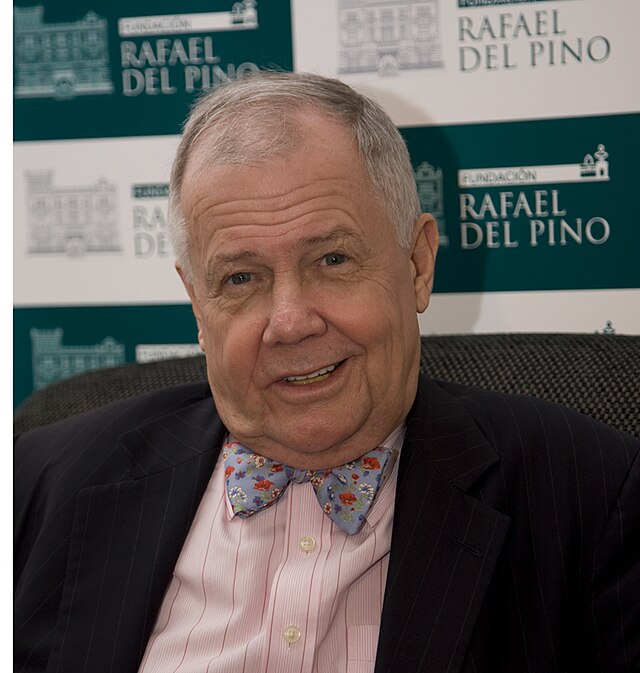


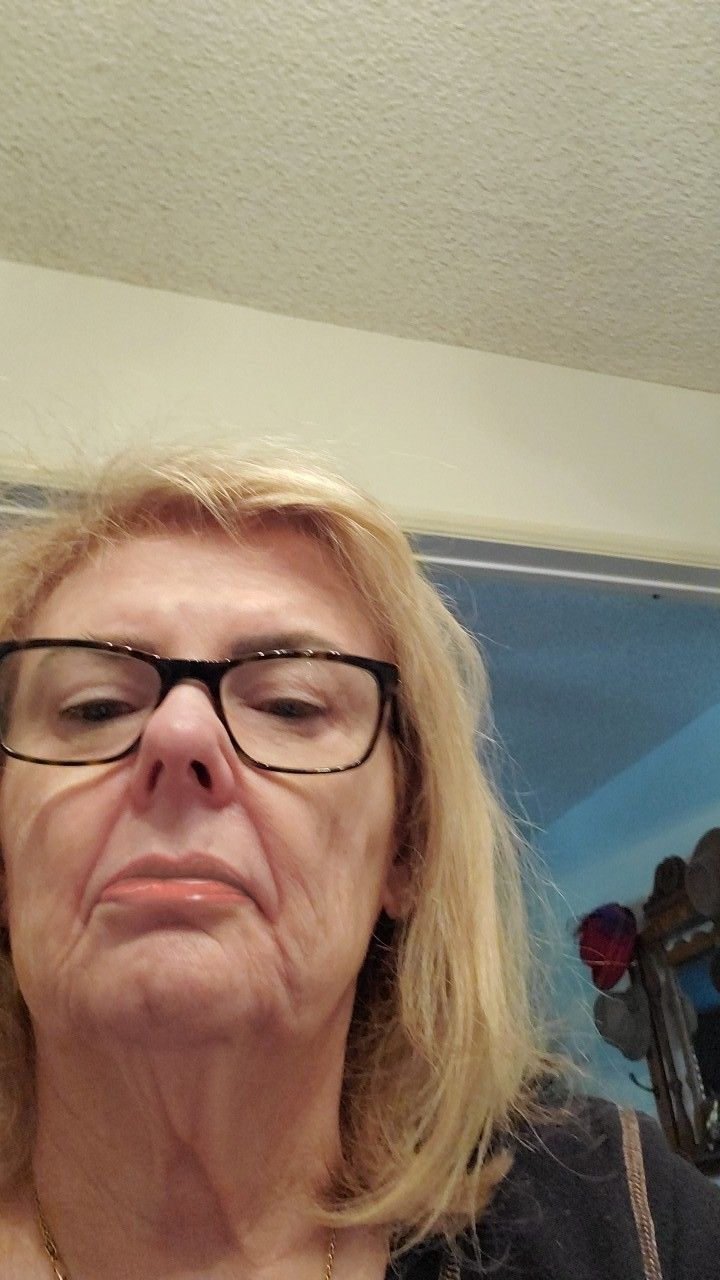
Related Products & Newly Released!
-
$400.00




SHIPPING POLICY
Your order is shipped from the United States with USPS tracking within one business day.
14 Day Return Policy
You can return your item back within
14 days of the purchase

Secure payments
Your payments are 100% secure and are processed through Square or PayPal on a protected security network.
SHIPPING POLICY
FREE International and Domestic (United States) shipping. Your order is shipped with USPS tracking 24 hours after you order.
14 Day Return Policy
You can return your item back within
14 days of the purchase

Secure payments
Your payments are 100% secure and are processed through Square or PayPal on a protected security network.
RESOURCES
support
Get Real Deals!
Sign up now to receive our articles for the latest insights and promotions!
RESOURCES
support
Get Fresh Articles!
Signup our newsletter to get update insight or promotions.
